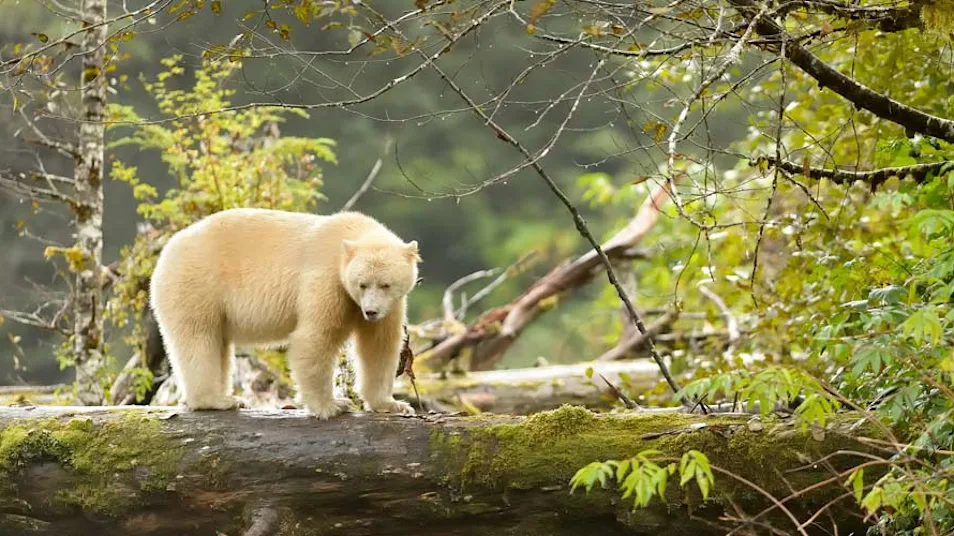
Know Before You Go


Grizzly Bear Facts | Canadian Rockies Wildlife Guide
‘Brown bear’ refers to members of the species found in coastal areas, while those inland and in northern habitats are called ‘grizzlies’, due to their distinctly “grizzled” appearance. They are both classified as Ursus arctos. Brown bears, along with polar bears, are the largest of the bear species. The two diverged between 150-500,000 years ago. In 2006, genetic testing confirmed the existence of polar bear-grizzly bear hybrids. Wild hybrids retain physical features from both species, but often adopt polar bear behavior as a result of being birthed and raised by polar bear mothers. Despite being of similar size and ferocity to its arctic relative, the grizzly bear most closely resembles the black bear (Ursus americanus). Grizzly bears have a prominent hump and large shoulder muscle mass, in addition to long, straight claws, which make them efficient at digging for roots and excavating the burrows of small mammals.
Grizzly bears are extremely intelligent, resourceful and opportunistic. Their memory recall enables them to return to sites of successful forage year after year. When grizzly bears aren’t feeding on berries and vegetation, they consume spawning fish, wolf-killed ungulate carcasses and elk and moose calves.
Grizzly bears hibernate during the winter months. The duration of denning is contingent on latitude, pregnancy status and unpredictable environmental factors, like climate change. Denning varies from a few days or weeks in Mexico to six months or more in Alaska.
Grizzly bears have the widest range of any bear species in the world. In North America, they inhabit dense forests, sub-alpine mountain areas and tundra within western Canada, Alaska, Wyoming, Montana, Idaho and Washington. Grizzly numbers were estimated at 100,000 in the contiguous United States in the early 1900s and were once abundant on the central plains. Today, fewer than 1,000 remain. They cling to a mere two percent of their former range as a result of human-carnivore conflict. As private and commercial development encroach on bear-inhabited ecoregions, grizzly mortality rates caused by environmental degradation, vehicle collisions and hunting activities inevitably rise.
See Grizzly Bears on These Canadian Adventures

Great Bear Rainforest: In Search of Spirit Bears, Grizzlies & Whales
Discover British Columbia at its wildest, in search of the elusive white Spirit Bear in the remote valleys of western Canada's Coast Range. Offshore, scout for humpback whales and orcas in emerald fjords.































